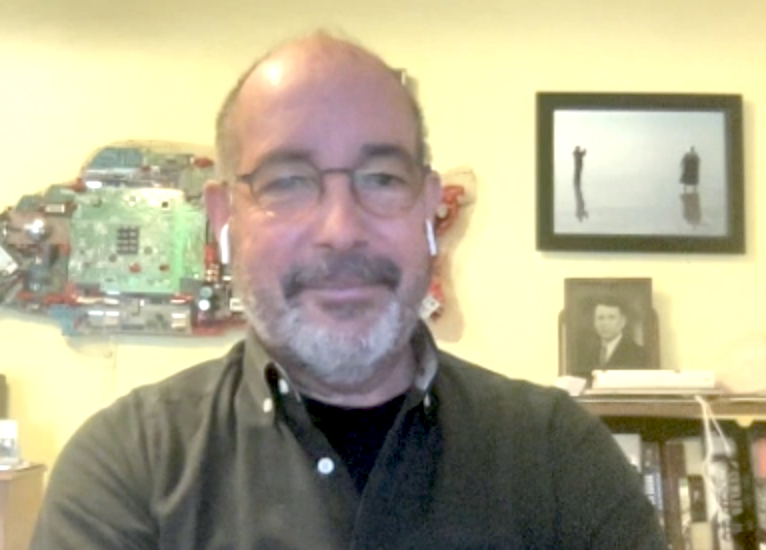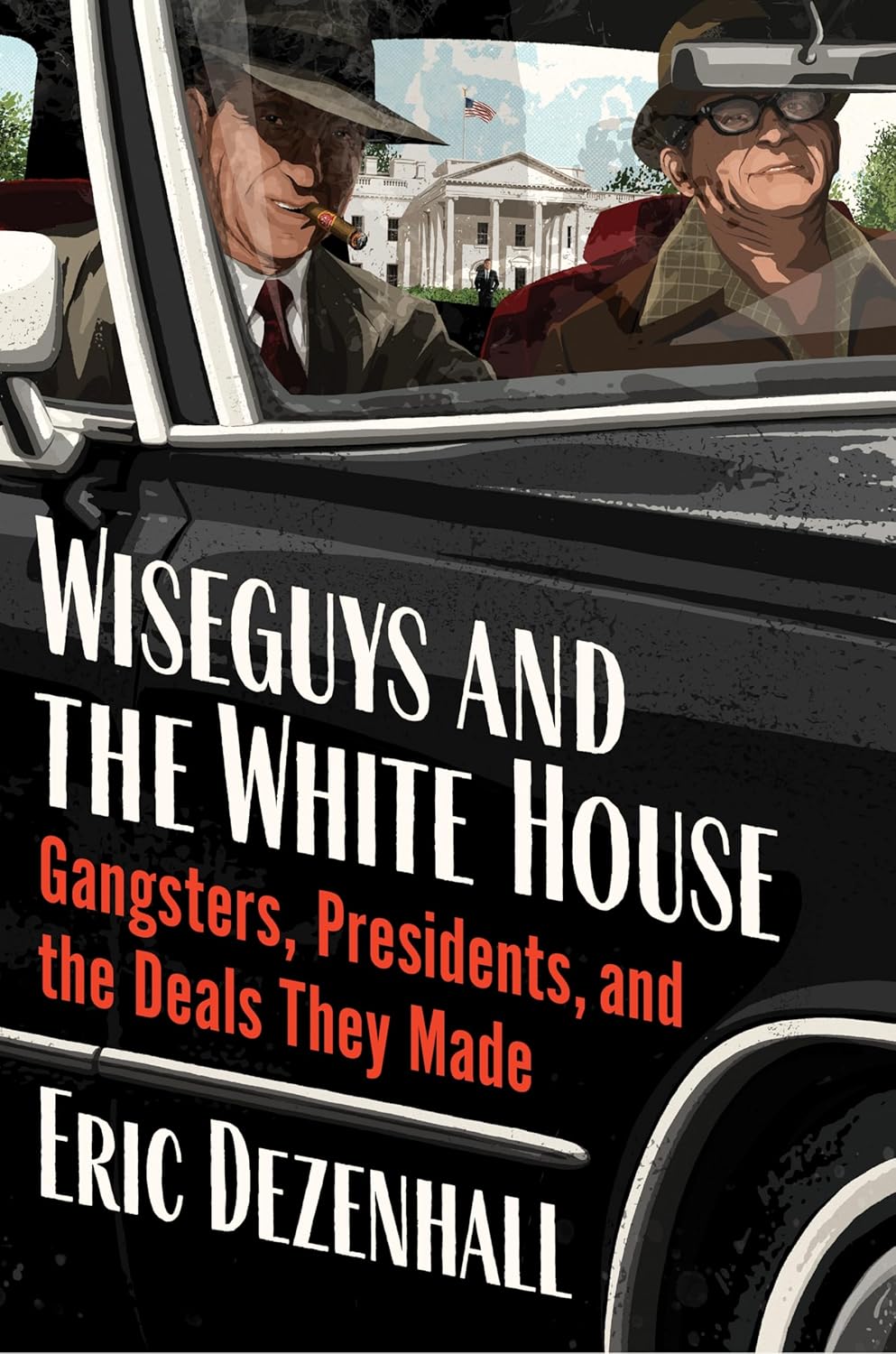
Scene #1 – In the early morning hours the “patients” are lined up out the door and around the block of the suburban Detroit clinic. Each has a well rehearsed set of subjective symptoms that will produce a scrip for Xanax, Vicodin or another drug that they can sell on the street. Muted cheers as the doctor pulls up in his expensive European sedan, gives them a friendly wave, and then enters the side door of the office. By noon he will have completed his “treatment” of those in the line, and he will retire to the doctors’ lounge at a nearby hospital where he can check his stocks on his laptop.
Scene #2 – The federal prosecutor and case agent view the latest day’s video of a court-authorized Title III from a camera inserted into another doctor’s office, this time in the inner city. The investigation had shown that no “patients” ever entered this office. The doctor enters the office and, using the list of names and drugs given to him by his assistant, proceeds to write out dozens of prescriptions for patients he never sees. What is striking to the prosecution team is that he always puts on his starched white coat and checks his appearance in the mirror before sitting at his desk to complete his task.
Scene #3 – Fourteen year old Sally digs through her parents’ medicine cabinet before leaving the house to join her friends. She thought there was some Valium left from last week but decides to settle for a few of these OxyContins her father had left over from some back surgery. A friend would bring some alcohol to share with the group. Her parents would receive a call later that night from the hospital emergency room where she had been taken after she went into seizure at the party.
Scene #4 – Max was a good student at the state university, but this semester’s course load was a ball-buster, and his performance on final exams next week would determine whether he would keep his scholarship for the rest of the year. Fortunately he had a buddy down the hall who had been diagnosed as ADHD and who would always slide him a few Adderall to boost his concentration level.
Scene #5 – Dr. Anderson gets a call as he is leaving the house with his family to see a Friday night movie. He has to take it because it is his turn to be on call. A desperate sounding patient of the clinic where he works is in a great deal of pain from a recent surgery. She needs a prescription for a pain killer called in to the pharmacy so that she can get through the weekend. Although he knows it will mess up the movie schedule, the doctor takes the time to check the Prescription Drug Monitoring Program database and discovers that the patient has been getting the same pain pills from two other physicians and an emergency room in the last month. He refuses the request and makes a mental note to address the issue with her regular physician.
Like most things, along with the use comes the abuse. Over one-fifth of Americans have taken prescription drugs for non-medical reasons. One-quarter of high school students have abused them, a 33% increase in the last four years. Six of the ten most popular illegal drugs used by 12th graders were originally obtained by prescription, and half of them came from mom and dad’s medicine cabinet.
The epidemic of illicit prescription drug abuse continues to gain speed. Its use exceeds the combined use of cocaine, heroin, and all inhalants. Marijuana is the only illegal drug used more than pharmaceuticals.
Drug overdose deaths exceeded automobile accident fatalities last year, and most of these (about 24,000) involved prescription drugs, especially addictive painkillers such as OxyContin and Vicodin.
The annual health costs from non-medical prescription drug use exceed $100 billion, not including the cost of lost productivity. There has been a staggering increase in the number of newborns addicted to painkillers. Their period of withdrawal is long, costly, and painful for the infant.
The reasons for the epidemic are predictably complex, but a lot of it stems from the prevailing attitude that any adversity can be avoided, denied or at least ignored by popping a pill. Most adults and kids mistakenly believe that non-medical use of prescription drugs is not as dangerous as illegal drugs on the street. When the unwitting source of supply is that benign family doctor and the drugs have passed FDA inspection and come in that cute little pill, how serious can some recreational use be?
Place that misperception in the middle of a proliferation of prescription drugs manufactured in the United States and the dire results reported above are predictable. Enterprising pharmaceutical companies have conducted research that has saved lives and alleviated the pain of countless numbers. And they have profited handsomely and marketed the risky drugs relentlessly. Purdue Pharma receives more than $3 billion in revenue annually from sales of OxyContin. Pretty good considering that three of its executives pled guilty in federal court in 2007 for misbranding the drug with intent to defraud the public and the company paid $635 million in fines and penalties for falsely claiming that the drug was not addictive. Check out the CNN Money article for the fascinating full story.
That’s the demand side of the equation. On the supply side, the factors supporting the epidemic range from venal criminality to well meaning but under-trained physicians. Although they are the most flagrant, health professionals in the first category are responsible for only a small percentage of the prescription drugs being abused.
The doctors and pharmacists who operate “scrip mills” and “pill mills” for big bucks are like any other criminal enterprise and should be treated accordingly. The physician in Scenario #1 above is awaiting trial but is on bond and practicing in his office. The physician in Scenario #2 was convicted, sentenced to 10 years in prison. Afterwards, he’ll be deported back to Nigeria.
More prevalent on the criminal side are the rings that operate especially in metropolitan areas to send “patients” to see a series of primary care physicians for the purpose of obtaining prescriptions for the drugs of abuse. If successful in convincing the doctor of his/her need for pain killers, the prescription is filled at a pharmacy and the pills dropped off in exchange for a cash payment.
Additionally, some enterprising independents have carved out a profitable living by doctor shopping for whatever prescription drugs are selling on the street. Vicodins sell for $10 and up, OxyContin for from 50 cents to $1 per milligram. Called Oxy or Cotton or Blue, the 40 mg pills sell for around $30 and is the most popular illegal drug right now in many cities. Other prescription drugs that can be available on the street include Xanax, Dilaudid, Demerol, Valium and Adderall. The “Holy Trinity” of abused drugs is the combination, taken together, of OxyContin, Xanax, and Soma (a muscle relaxant).
One independent operating in a Detroit suburb, when confronted, proudly displayed her system of repeated prescriptions from a dozen different doctors. She kept a strict calendar of when the pills from each prescription were due to be used up. She never sought a renewal before that date and showed up in person to request another scrip. She was presentable, had the required pain symptoms and avoided all behavior which medical offices have learned to identify from “drug seekers.” The result was that she could count on making $5,000 to $10,000 a month.
Non-criminal suppliers like well intentioned doctors are also part of the problem. Not only do they sometimes fail to detect drug-seeking behavior, but in an abundance of caution they also resort to the most serious (and abused) pain killers even though other options exist.
The fact is that many doctors are uncomfortable with treating patients for pain. The extent of the patient’s suffering is often impossible to verify by objective test, and pain tolerance can vary greatly from patient to patient. Physicians feel like they are on a slippery slope of, on the one hand, wanting to relieve the patient’s suffering and, on the other, avoiding the problems of addiction, not to mention getting anywhere near conduct in which someone could accuse them of not having a demonstrable medical purpose. The observable distinction between a stoic patient in need of pain treatment and one who wants a medication to sustain his or her addiction (or, worse, for sale or recreation) can be pretty elusive.
The other difficult tension for physicians is that there have been many studies that have shown that doctors under-treat pain. Doctors of end-stage cancer patients have been known inexplicably to use less effective pain drugs in order to avoid the prospect of addiction. Patients with chronic, as opposed to acute, pain problems have particularly had difficulty getting adequate pain medication. There is some indication that the medical establishment is starting to take steps to remedy this problem
However, a debate currently raging in the medical and professional community illustrates this dilemma. The debate is over the use of opioids for treatment of chronic pain. Some think that its efficacy is not sufficiently established or, at least, such drugs should be limited in terms of duration and the maximum daily dose. This caution stems from the dramatic increase of emergency room admissions and deaths from opioid use. One such group is called Physicians for Responsible Opioid Prescribing, or PROP.
A group with different views on the use of opioids for chronic pain patients calls itself PROMPT, Professionals for Rational Opioid Monitoring and Pharmacotherapy. Who says these geeky guys and gals don’t have fun with their medical acronyms?
All debate aside, the fact of the matter is that few doctors have received the training necessary to respond to this dilemma. Medical schools, residencies, and required continuing medical education have traditionally ignored the subject. Again, some medical education programs are now addressing the subject.
One development which has great promise in helping weed out drug seekers and in identifying and treating patients with the potential or reality of addiction is the Prescription Drug Monitoring Program (PDMP). Although the program has great potential, its use as a force to improve medical care and reduce abuse has been limited.
PDMP are statewide electronic databases which collect data on controlled substances dispensed and make that information available to authorized users. Although such programs undoubtedly could be important tools to identify and combat abuse, their present formulations have severe limitations. The primary one is that each state has legislated its own system with widely diverse requirements, data fields and formats. Few states allow the information to be disseminated to anyone outside the state. Even if PDMP is utilized, patients can avoid detection by simply crossing state lines and seeing a doctor there.
Many states have essentially cut law enforcement out of the loop and do not provide either direct access or reports of suspicious behavior to police or drug diversion agencies. These reports would be a gold mine of data for investigative leads and evidence for the prosecution of abusers, as well as sources for administrative actions against offending doctors and pharmacists.
Another problem is that the use of the program is almost entirely voluntary. The great majority of doctors, pharmacists, and hospitals simply decline to use it. A patient’s history of obtaining drugs from multiple sources is, in most states, available by computer, but this extra step is considered just one more bureaucratic burden. Most physicians by far, like in Scenario #5, above would have authorized the prescription and gone to the movie on time. A handful of states, led by New York, are in the process of making PDRP checks mandatory, at least under some circumstances.
Other suggested reforms are catalogued in the extensive report, Prescription Drug Monitoring Programs : An Assessment of the Evidence for Best Practices, www.pdmpexcellence.org. Nowhere in the 100-page report does anyone suggest the obvious option that a single national program, mandatory to all controlled substances dispensers, be instituted. Nor has anyone else apparently suggested that such a solution be considered.
A national system would essentially halt doctor-shopping and drug seeking enterprises and greatly reduce the quantity of prescription drugs available for abuse. Perhaps the controversy over the Affordable Health Care Act makes such a proposal unworkable. However, the situation seems comparable to the realization not too many years ago that a nationally required system of lower speed limits and seat belts would save lives. Whatever initial objection to the nationalization of the solution to that problem has been eliminated by the proven results.
The illicit prescription drug epidemic is here and getting worse and is costing tens of thousands of lives. The proposals suggested here, better physician education, more resources and involvement by law enforcement, and an effective PDMP program, would not eliminate the problem, but it would have a significant impact. An impact that could improve medical care and save lives.




